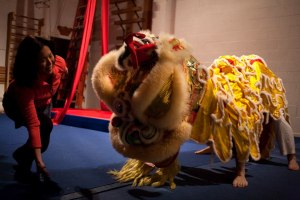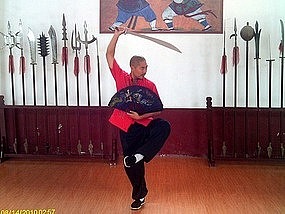Project #5: Your Body Speaks
From Taekwondo to Toastmasters: How I Learned How to Learn
The following was delivered on Sun June 9, 2013 at Sinchon TM on the day of its club officers elections. The subject matter was deliberately chosen to coincide with my run for VP Education.
How do you guys like the kung fu suit? Pretty snazzy, yeah?
If I were being honest I’d be wearing a Taekwondo/Karate dobok right now; I started learning when I was 6. I actually did end up learning some kung fu, along with some Capoeira, a bit of circus skills, and now finally, Toastmasters.

You’re probably thinking “Hey! Toastmasters doesn’t belong on that list – it’s not a martial art, it’s not even a physical activity”
Which is true.
But it is a system geared towards learning a discipline, one that can feel complex and terrifying
And how you overcome those feelings comes down to how you structure 3 fundamental elements:
- how the student explores new material
- how the material is mapped out
- how the instructor guides the student
Let’s start with the student side. I’ll need a volunteer – someone who has never taken any martial arts.
<30 sec: bring volunteer forward, walk through down block, 3 practices in air>
OK, so you’ll notice that right now _______ is just blocking the air, right?
Which means there’s nothing at risk if she doesn’t do the motion quite right yet.
Worst case, she messes up and … incorrectly blocks the air. No big deal.
And just to double check: you’ve never done this before, right?
Which means that _______ has gotten the hang of going through the motions even though she really doesn’t have a concrete sense of what the move is for.
But that’s cool. Cause now that she can snap off the block downwards once …
… twice … <gesture pause>
if the third time I come in with a kick … <slow kick, blocked>
Notice how she nailed it on her first time?
By first performing those 2 practice runs, when the context changed dramatically – blocking air vs. blocking a real kick – she had already ingrained the actions into her brain.
In short: action first <gesture block>, understanding later <gesture to head>. There’s no time for fear.
<send participant back to seat>
That holds equally true for Toastmasters. Remember the first time you came as a guest and you stood up and introduced yourself? Then afterwards you sit down for 이차 round and tell the person next to you about yourself in more detail? Those were the 2 practice runs for your Icebreaker.
See? Action first: even when you didn’t know what you were doing.
Of course, that begs question: what is the next action to take?
Which brings us to the next element, the material itself should be organized in such a way that it’s always clear what step to take next.
You know how most Taekwondo schools have a progression of belts: white, yellow, blue, …etc…, red, and finally black?
Many people think the point of these belts is to serve as a badge to show what you’ve already accomplished.
But the real value of a belt is to signal the instructor what the student needs to learn next
- Oh you’re a white belt? Then here are the basics blocks and punches
- Red belt? Then let’s focus on new advanced kicks and sharpening old ones
- Black? It’s not that you’re perfect, but by now you know your own strengths and weaknesses and can self-study
And again, the same holds for Toastmasters.
First time guests? Try table Timer or Ah Counter.
Returning guests? Volunteer for a table topic or even Icebreaker.
Speaking of Icebreaker, remember 2 weeks ago when MJ crossed The Invisible Line? Now her options have opened up and she can proceed in a variety of directions: CC2, Evaluator, Table Topics Master, Officer. It’s up to her.
The material should always be organized in such a way that it’s clear to the learner what step to take next.
Which begs the final question, organized by whom?
Now in Taekwondo, what’s the first thing the white belt learner and black belt instructor do when they see each other?And that brings us to the most important role, that of the instructor.

They bow.
And why does the white belt bows to the black belt?
It’s respect. Respect for the work they put in, and for the skills they’ve attained.
Now a harder one: why does the black belt bow back?
… … …
It’s also respect.
Because if white signifies 1, and black signifies 100, then the black belt recognizes that the 99 steps between them is nothing compared to that first step of putting on the white belt and going from 0 to 1.
Just as in Toastmasters, the club officers greet new members with a handshake to show respect for them taking the first step in showing up.
As Socrates said, education is a kindling of a flame.
The learner’s role is to approach the flame, overcoming fear through action.
The material, properly organized, will facilitate a seamless passing of the flame.
And the instructor, coming full circle, must recognize the potential of the learner to one day take their place, before the inevitable day that their own personal flame <wisp> fades away.


This is great!You must be a VP by now. I love your analysis about the student and instructor.First action ,then understanding makes a nerological sense in our brain. When we do some action especially with a great expectation and excitement, our brain secrets a lot of newrotransmitters,ie Dopamin, Serotonin, Norepinephrin,Endorphin, etc. resulting in happy feelings from Norepinephrin, Serotonin,; better attention & excitement from Dopamin and disappearance of pain from the morphine secreted ( called Endorphin). When we learn anything there is a firing inside brain which will eventually change the brain , so we become a ” different person ” since brain makes who we are. Understanding Second is also a good teaching technique since understanding or logical ,high mental activities take place in the Prefrontal Lobe, which is also called executive brain. If you Consider that biologicallly we are one of mammals which reacts to any new stress ( including new learning) by fight or flight response, and the prefrontal lobe which is site of the high mental function,matures only after we are born through the help of parents, school,etc. until age 25-30 y.o. “understanding” is possible only when your brain matures fully while Action is most basic, primitive brain activity for survival, Good work, David.